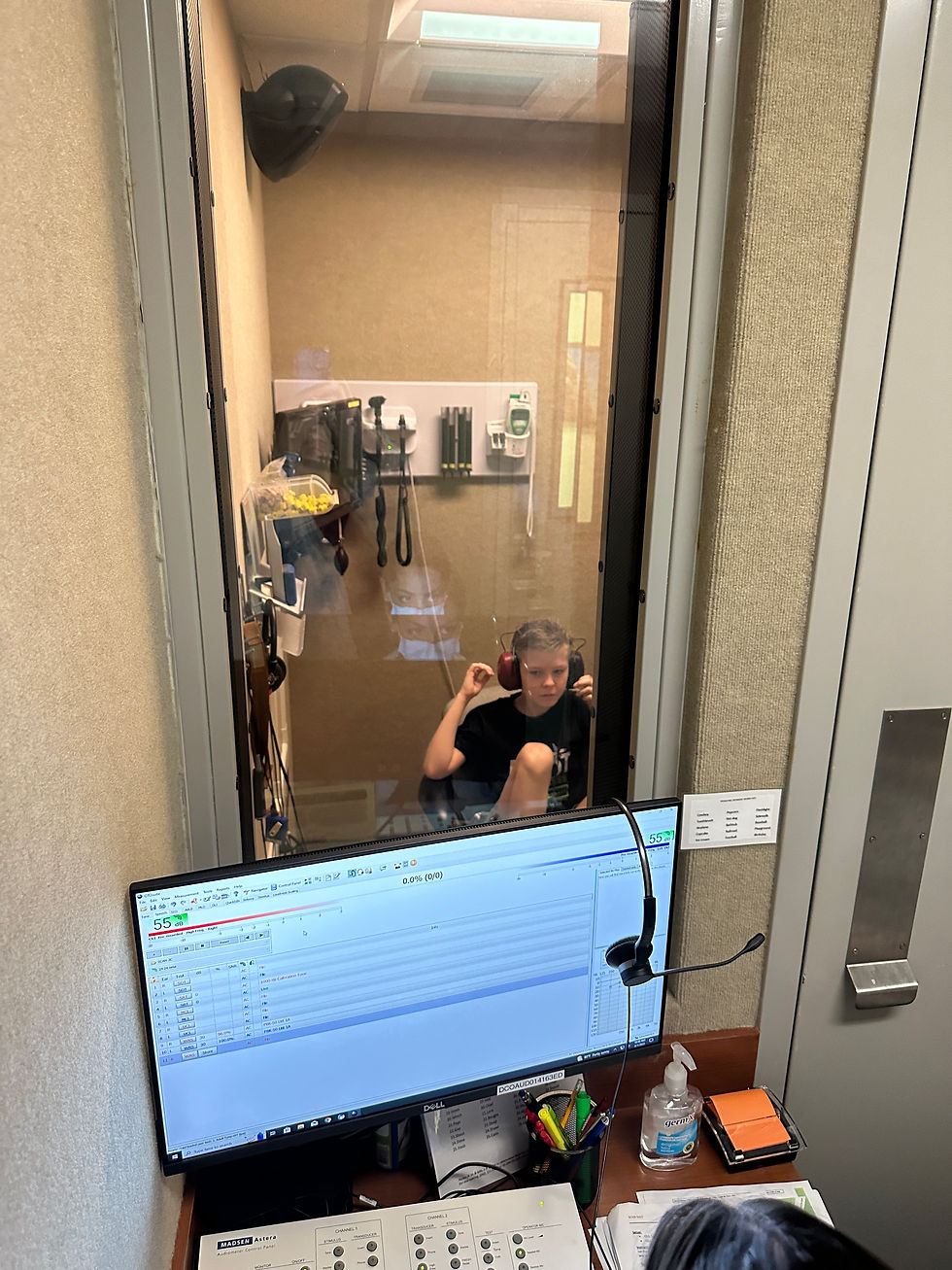When Listening Becomes a Challenge: The Relationship Between Autism and Central Auditory Processing
- Chris & Sandy Colter
- Mar 17, 2023
- 3 min read

Here we have another piece to Bryce's puzzle. Some symptoms we noticed in Bryce were his inability to remember recent conversations, sensitivity to loud sounds, difficulty with comprehension, keeping his attention, sounding out words, and following directions. All of this led us to have a comprehensive hearing evaluation done. The results were expected, but unexpected if you know what I mean. Here is a little more about the tests...
A useful tool in evaluation listening challenges is the Auditory Integration Profile or (AIP). AIP is a diagnostic tool used to evaluate the auditory processing abilities of an individual. This tool is commonly used by audiologists, speech-language pathologists, and other professionals who work with individuals with sensory processing difficulties. The AIP assessment typically involves a series of tests and exercises that measure various aspects of auditory processing, including pitch discrimination, sound localization, and temporal processing. The tests involve listening to a series of sounds or speech stimuli and responding to specific instructions or questions.The AIP can help to identify areas of auditory processing weakness, which can be used to develop targeted interventions to improve an individual's ability to process and understand auditory information.
Auditory processing weakness is a term used to describe difficulties in processing and interpreting auditory information. It is a condition in which an individual's brain has difficulty understanding and making sense of sounds that are heard. People with auditory processing weakness may have normal hearing ability but struggle to interpret and understand spoken language, particularly in challenging listening environments with background noise or competing sounds.
Auditory processing weakness can manifest in many ways. Some common symptoms include difficulty following verbal instructions, struggling to distinguish between similar-sounding words, difficulty remembering and recalling spoken information, and difficulty processing rapid speech or complex sentences. Individuals with auditory processing weakness may also have difficulty processing non-speech sounds, such as music or environmental sounds.
The causes of auditory processing weakness are not fully understood. Some experts believe that it may be related to atypical neural connectivity or processing in the brain, while others suggest that it may be related to underlying medical or developmental conditions, such as autism spectrum disorder or attention deficit hyperactivity disorder (ADHD).
Auditory processing weakness can have significant implications for an individual's communication and social skills. It can affect their ability to learn, participate in conversations, and interact with others. Early identification and intervention are critical to help individuals with auditory processing weakness to develop strategies to compensate for their difficulties and improve their communication and social skills.
After testing was complete, they diagnosed Bryce with Central Auditory Processing Disorder or (CAPD). CAPD is a neurological condition that affects the brain's ability to process and interpret sounds. This disorder is often associated with autism spectrum disorder (ASD), a neurodevelopmental disorder that affects communication and social interaction.
Individuals with CAPD may struggle to distinguish between sounds or filter out background noise, making it difficult to understand speech, especially in noisy environments. They may also have trouble following verbal instructions or remembering details of a conversation.
CAPD is a common co-occurring condition in individuals with ASD. Studies suggest that up to 75% of individuals with ASD may also have CAPD. Both conditions share some common symptoms, including difficulty processing sensory information and challenges with communication and social interaction.
One possible reason for the high prevalence of CAPD in individuals with ASD is that both conditions are thought to involve atypical neural connectivity and processing in the brain. In individuals with ASD, abnormal connections between different brain regions may lead to sensory processing difficulties, including difficulties with auditory processing. These difficulties can, in turn, exacerbate communication and social difficulties, creating a cycle that reinforces the core symptoms of ASD.
It's essential to identify and diagnose CAPD in individuals with ASD as early as possible. Treatment options may include speech and language therapy, auditory training, and environmental modifications, such as reducing background noise. Some of the interventions they suggested for Bryce are music lessons, singing, different types of sports including karate, gymnastics, cooking using recipes, playing Simon Says and Mother May I, etc. These all strengthen the brain's internal listening pathways. Early intervention can help individuals with CAPD and ASD to improve their communication and social skills, enhance their quality of life, and improve their long-term outcomes.
We're so glad that we can now better understand what Bryce is experiencing and help him. The ongoing challenges with autism continue, but now we have more tools in our toolbox to combat some of his symptoms.




Comments